pacific islands polynesian attitudes to child training
advertisement
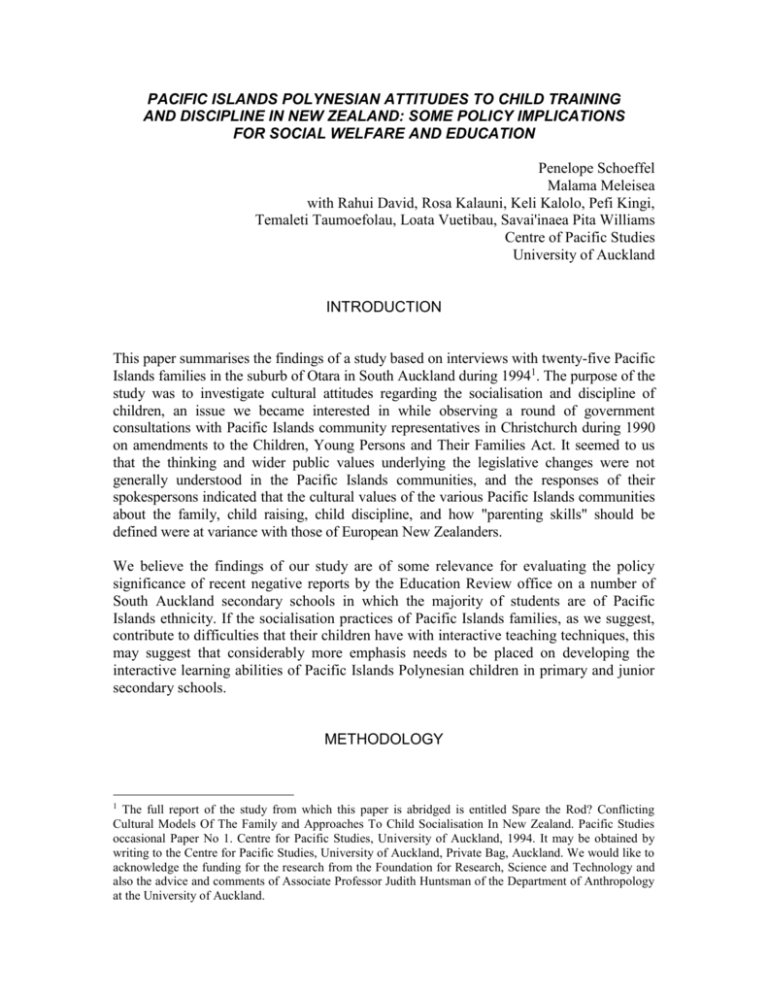
PACIFIC ISLANDS POLYNESIAN ATTITUDES TO CHILD TRAINING AND DISCIPLINE IN NEW ZEALAND: SOME POLICY IMPLICATIONS FOR SOCIAL WELFARE AND EDUCATION Penelope Schoeffel Malama Meleisea with Rahui David, Rosa Kalauni, Keli Kalolo, Pefi Kingi, Temaleti Taumoefolau, Loata Vuetibau, Savai'inaea Pita Williams Centre of Pacific Studies University of Auckland INTRODUCTION This paper summarises the findings of a study based on interviews with twenty-five Pacific Islands families in the suburb of Otara in South Auckland during 19941. The purpose of the study was to investigate cultural attitudes regarding the socialisation and discipline of children, an issue we became interested in while observing a round of government consultations with Pacific Islands community representatives in Christchurch during 1990 on amendments to the Children, Young Persons and Their Families Act. It seemed to us that the thinking and wider public values underlying the legislative changes were not generally understood in the Pacific Islands communities, and the responses of their spokespersons indicated that the cultural values of the various Pacific Islands communities about the family, child raising, child discipline, and how "parenting skills" should be defined were at variance with those of European New Zealanders. We believe the findings of our study are of some relevance for evaluating the policy significance of recent negative reports by the Education Review office on a number of South Auckland secondary schools in which the majority of students are of Pacific Islands ethnicity. If the socialisation practices of Pacific Islands families, as we suggest, contribute to difficulties that their children have with interactive teaching techniques, this may suggest that considerably more emphasis needs to be placed on developing the interactive learning abilities of Pacific Islands Polynesian children in primary and junior secondary schools. METHODOLOGY 1 The full report of the study from which this paper is abridged is entitled Spare the Rod? Conflicting Cultural Models Of The Family and Approaches To Child Socialisation In New Zealand. Pacific Studies occasional Paper No 1. Centre for Pacific Studies, University of Auckland, 1994. It may be obtained by writing to the Centre for Pacific Studies, University of Auckland, Private Bag, Auckland. We would like to acknowledge the funding for the research from the Foundation for Research, Science and Technology and also the advice and comments of Associate Professor Judith Huntsman of the Department of Anthropology at the University of Auckland. The study set out to explore the life experiences of a group of Pacific Islands people; parents and grandparents born and socialised in Pacific Islands societies and cultures, and their (mainly) New Zealand-born children and grandchildren2. Because we could not research actual disciplinary practices within the scope of a relatively short study, we aimed to record the values and attitudes of Pacific Islands families. The research team interviewed people whom they identified from their own personal networks. The criteria we used to select each family was that the parents should have been born and grown up in a Pacific Island country, and that the family should reside in the Auckland suburb of Otara3. The interviews covered two or three generations in each family and the focus was on the childhood experiences of the parents and grandparents and the New Zealand-born or raised children. Parents and children were interviewed separately. People in the parents' and grandparents' generation were mainly interviewed in their own first languages but English was used for interviewing most of the people in the children's generation, who were generally not fluent in their parents' language. THE PARENTS The parents and grandparents interviewed were almost all from rural village backgrounds. A common pattern of childhood emerged from the interviews. Life had revolved around the household and children were expected to stick close to home, to be available to help with the indoor and outdoor work of the household, to run errands for their elders, and to help to take care of younger brothers and sisters. The parents we interviewed expressed a set of common beliefs about the most important things that they had learned when they were children. A frequent response was that their childhood had taught them to love and obey their parents, elders and family and to behave the way their parents wanted them to behave. The word love, to most of our informants, referred to the practical demonstration of their affection through obedience, by paying heed to what they were told, by having consideration for the feelings of others, particularly elders, and by learning and practising approved forms of behaviour. Most of the parents and grandparents interviewed, male and female alike, recalled their childhood as a time of hard work and service to their elders and their family. All had liked going to school but only a few had been able to proceed past the primary levels. Several parents mentioned the strict discipline enforced in island primary and intermediate schools, and being beaten by teachers for cheekiness or inattention. A number mentioned that they thought island schools were superior to schools in New Zealand in teaching children discipline, morality, manners and obedience. 2 The ethnicity of the participating families was as follows: ten Samoan, three Tongan, three Niuean, three Cook Island, three Tokelauan, and three Fijian. 3 In Otara persons classified as "Pacific Island Polynesians" in the census are the majority of residents. We were unable to find Fijian families in Otara who could participate; so we included three Fijian families who lived in Glen Innes and Onehunga. When asked what they have been punished for in their childhood the parents and grandparents gave consistent responses indicating that disobedience and defiance were the cardinal sins of their youth, and all but one of the adults interviewed said that they were beaten for such offences. Many mentioned being showered with pebbles or "backhanded", while most emphasised the severity of the punishments they received, being beaten with belts, sticks, brooms, sandals, boots, fists. But most believed that this was the most effective way to teach children proper behaviour and that it was a necessary part of their upbringing. The central concern of the parents was how cultural values were to be maintained and translated into a new multi-cultural setting in New Zealand. Tongan and Samoan parents laid particular emphasis on the importance of their children growing up with a "Samoan" or "Tongan" cultural identity and value system. Despite the differences in ethnicity, age and personal circumstances among people in the parental generation, they all expressed very similar views about bringing up children in New Zealand. Most parents had fears of bad influences on their children and many were concerned about the ideas their children developed at school. The new value of greatest concern then was that of personal freedom to make choices (for example about going out, friends, church membership, and responsibilities at home). Most parents spoke of the difficulties of maintaining their influence over their children when the children felt they had rights of personal choice. The difference in life experiences between the island-born and New Zealand-born generations was pronounced. Most parents had grown up in rural communities in which their major social interaction was with children to whom they were related or connected through their community and with whom they shared common values, customs and beliefs. However in New Zealand, most parents said, children formed friendships at school with children of different ethnic and cultural backgrounds, and with different values. Thus the parents tended to attribute any behaviour or aspirations they disliked in their children to the influence of their friends or their peer group at school. Most believed that "the home" should be the major force in shaping children's behaviour and expressed concern that their children were influenced by their school friends, saying that "children listen more to friends than parents". Behaviour that parents considered to be a problem, such as adolescent girls wanting to go out, boys spending too much time away from home or becoming delinquent, were most commonly attributed to peer influence. Another common concern was the influence of a more materialistic culture upon their children. While most parents said that what had attracted them to New Zealand was the opportunity to earn good wages and enjoy a better material standard of living, they were concerned about the influence of "the good life" on their children. They thought that, as children, they had been strengthened by material hardship and hard work. As a result, many pointed out, they were able to appreciate that nothing comes easily and that only effort is rewarded with success. There was widespread concern that children in New Zealand did not learn this lesson. Many parents attributed delinquency to the lack of a system of coherent community values and controls such as those found in rural Pacific Islands communities. However a number of parents pointed out that the absence of coherent community values, checks and balances, gave parents greater responsibility for their children than was usually the case in the islands, where the community influenced the socialisation of children. There was a strong consensus of views as to the values they wished to pass on to their children – the importance of obedience to parents and elders and respect for their wishes, and conformity to religious and cultural values concerning the proper role and behaviour of children. Most expressed faith in the principles by which they themselves had been brought up and the effectiveness of drawing upon their own experience. Parents generally said they had confidence that they knew the right way to teach their children correct standards of behaviour. Typically this involved giving children frequent advice as to what was expected of them, through direct discussion, or indirectly through prayer, and rebuking them for undesired behaviour and disapproved attitudes. Talking to children was generally not seen as a dialogue between the parents and child but as a process in which the parent spoke, giving advice or instructions, and the child listened and obeyed. A number of parents alluded to their cultural values that children should not argue or disagree with their parents, and defined as "bad behaviour" attempts by children to participate in discussion among adults. Most also made explicit reference to the importance of using physical punishment to teach their children desired standards of behaviour. This was a point of view with which only two individuals disagreed – saying that physical punishment could produce undesired results by making the child or young person angry, resentful and more difficult. Most parents were aware, from media reports in recent years, that there was controversy about the disciplinary methods of Pacific Islands parents. There was widespread recognition that the disciplinary methods of many Pacific Islands parents were being equated by some with "child abuse". This was seen as an injustice to Pacific Islands people in New Zealand and as a misunderstanding of their cultural and religious beliefs. Some mentioned that the State was taking away from parents the right to punish children physically, and that children knew and took advantage of this. Most questioned the right of the State to intervene in family matters, asking rhetorically how, if parents could not discipline their children as they saw fit, they could raise their children properly. THE CHILDREN The "children" interviewed ranged in age from 12 to 29 years (we use the term children here to refer to their generational context). In all but one of the families with adult children, the children lived at home. Most of the children interviewed were born in New Zealand and about half of them had visited their parents' home island. Only those who had spent part of their childhood in their parents' home island spoke their parents' language fluently. Many children who had not been to their parents' homeland said they found the subject of the homeland irksome since it was so often invoked in relation to areas of disagreement between parents and children. Most of the children interviewed defined "good behaviour" in the same way that their parents did, describing the behaviour desired of them by their parents in terms of obedience, deference and respect. Most thought that legislation restricting parents' right to beat their children would be counterproductive, but just as parents did not always agree amongst themselves about the effectiveness of beating children, children within the same family disagreed on the issue. Freedom of movement was most frequently described as the major issue of conflict with parents by both the girls and boys, and parental attempts to stop their children going out seemed to be the greatest source of resentment. Most mentioned greater strictness towards girls with regard to going out and with regard to the amount of household work expected of them, and some girls expressed resentment of this. A number of children said their parents tried to restrict their interaction with friends outside school hours, and that their friendships were often viewed with suspicion. However most children held similar views to those of their parents as to why some children got into trouble with the law, seeing it as a result of problems in the home and getting mixed up with "the wrong crowd". All said that they had been occasionally or frequently slapped or "given a hiding" for disobedience. Generally, younger children were more indignant about being hit than older and adult children, no doubt because parents appeared to hit older children less frequently, except for major offences, and so their memories were less immediate. However one older girl expressed strong opposition to physical punishment and described how she was haunted by memories of the violent treatment she had been subjected to when she was small. Most children thought that open communication between parents and children was, ideally speaking, a good thing, but very few felt that they had open communication with their parents. Most children spoke positively about their experiences in primary, intermediate, and secondary school, emphasising the pleasure of being with their friends and feelings of appreciation towards their teachers. The few negative comments were made by children who felt that some teachers and students were racist in their attitudes towards or treatment of Pacific Islands students within the school. Several said that the practice of encouraging children to work on their own at school was not good for Pacific Islands children, who were not used to self-motivation and responded better to firm directions. Others talked about the problem of peer pressure not to show too much liking for teachers, and of the need to affect a "don't-care" attitude. Others mentioned bullying and expressed the wish that schools, or teachers, would intervene to stop it. The church was a very important institution in the lives of all but one family interviewed. Most younger children enjoyed church. However religious obligations were a source of conflict in five of the families interviewed. From the point of view of most older children, there were three common conflicts. The first was being required by their parents to go to church when they didn't want to go. The second was being prevented by their parents from attending a different church with their friends; and the third was the amount of time and resources parents devoted to the church. PACIFIC ISLANDS AND MAINSTREAM NEW ZEALAND VALUES – OUT OF STEP OR OUT OF TIME? When we were discussing the findings of this study with a number of Pacific Islands community leaders, one, Dr Pita Taouma, commented to us: The ideas Pacific Islanders have about raising and disciplining children have the same roots as the ideas of palagi [European] New Zealanders. The roots are the Victorian religious teaching that was brought to us by palagi missionaries over 160 years ago. Palagi New Zealanders believed the same things until recently – we are just a bit behind the times, that's all. Dr Taouma is right; there have been major changes in public values about socialisation and child discipline in New Zealand since the 1960s, as noted by Jane and James Ritchie (1993:64): For twenty-five years, we have been researching patterns of child training in New Zealand families, both Māori and Pākehā, urban and rural … we were surprised by the major features that emerged from these [1963] data. New Zealand mothers relied on very few of the wide range of possible control techniques. Those they did use were, for the greater part, negative – scoldings, threats, reprimands and punishment. Not only did they make infrequent use of positive or reward techniques but they had a very negative attitude toward them, regarding them as bribes or evidence of spoiling, and not infrequently, expecting that good behaviour should be its own reward. Finally, physical punishment was a moral obligation in the 1960s. The first principle of parenting was "spare the rod and spoil the child", not "suffer little children to come unto me." Throughout the 20th century the scientific study of child development has influenced ideas about modern child care, parenting and education, and attitudes towards parenting in urban middle-class culture around the world are widely informed by popularised scientific studies which have shaped modern beliefs and given rise to a new model of the family. According to this new model the child should be given equal rights, subject to his or her need for protection, in a democratic family structure. The model condemns the use of coercion, particularly violent coercion. It sees the child, if not as a blank slate, as a being that contains a range of potentially good and bad behaviour patterns. In the new model, good parenting skills are believed to have the power to elicit desired behaviour patterns, using positive rather than negative techniques of reinforcement. The model predicts that skilled parenting will enable the child to develop his or her own inner resources of self-discipline and control, in order that the child will choose constructive behaviours that will benefit both the child and the other members of the child's social world. This ideal model of the family and socialisation practices prevails among the middle classes in countries with advanced industrialised economies. Furthermore it is linked to educational values which aim to instil learning through the comparison of ideas, the encouragement of intellectual appreciation and the rejection of drilling and rote learning. Thus the middle-class child, shaped by the new socialisation model, usually responds to and benefits from interactive teaching methods. Polynesian4 socialisation beliefs and practices, like those of the older generation of New Zealanders, have been strongly influenced by Christian teaching since the mid-19th century and many people interviewed in the study under discussion quoted the Scriptural injunction "Spare the rod and spoil the child," and old sayings such as, "Children should be seen and not heard". However, the cultural roots of Pacific Island Polynesian values concerning the family and the socialisation of children are closer to those of preindustrial Europe than the contemporary values of the post-industrial middle classes. Many anthropological studies describe common features of Polynesian socialisation practices, which include a period of affectionate indulgence towards infants in early childhood followed by an abrupt transition period in which the small child learns to become more independent in a wider social context, and takes its place in the family hierarchy. Kavapalu (1991)84-92) describes how Tongan children are not regarded as full social beings until they have learned the proper repertoire of cultural behaviour (anga fakatonga). All children are perceived as naturally foolish and ignorant (vale), and naughty and mischievous (apu'u). Very similar beliefs have been described for Western Samoa (Schoeffel 1979). Infants and young children are valea (ignorant of social norms) and the pattern of socialisation employed emphasises teaching the child to learn its place, appropriate to its status, in a household group and a community, which includes learning to surrender self-interest to the common good. The everyday means by which this effect is achieved is by shaming the child with gentle mockery, ridicule and teasing designed to teach the child to be modest and self-effacing. When shaming techniques are not effective deterrents to undesired behaviour, they are backed up by direct threats and finally by physical punishment. The orientation of early childhood socialisation is to induce conformity and the acceptance by the child of its place at the lowest level of a hierarchy of social status based on age. The virtues which parents primarily seek to teach their children are those of proper behaviour based on the 4 While we have used the common ethnic term "Pacific Islands" to refer to our informants and their communities in New Zealand (who are all, with the exception of the Fijian families, Polynesian) we use the term "Polynesian" in reference to cultural patterns, recognising that not all Pacific Islands cultures are Polynesian. learning of religious principles, obedience and respect. The labour of children is also very important to rural households and children begin to render service as soon as they are physically able (Schoeffel 1979, Kavapalu 1991). Polynesian children are conditioned from early childhood to learn passively, primarily by careful observation and listening, reinforced by admonition, so that they become sensitised to other people at an early age (Ochs 1988). The process is heavily influenced by other children; at age two or three years the child takes its place among a group of children in which authority is based on age. Parents are fairly remote figures to young children and they are not necessarily the ultimate authority figures; older members of the household may be. However parents are more likely to be the disciplinarians, while grandparents tend to be more indulgent. Polynesian cultures generally hold that adult roles and mature behaviour are not necessarily associated with chronological age, but rather with individual readiness to assume responsibility and the gradual development of the ability to make wise judgments. It has also been widely noted that socialisation practices encourage Polynesian children to develop strong values of conformity to their group and its internal pecking order. In Eastern Polynesia (rather than Western Polynesia) there is also a well documented taurearea period among adolescents (e.g. Levy 1973). This is a time of low status, lack of responsibility and licence in which people make allowance for youthful high spirits and erotic obsessions, expecting nothing of the young but hard work in the service of their elders. It should be noted in our study, however, that the six Eastern Polynesian parents (Cook Islanders) interviewed all shared the views of Western Polynesian parents (Samoans, Niueans, Tokelauans and Tongans) that girls should be strictly supervised and restricted from going out at night. The generalised Polynesian cultural model of the family is that of a hierarchy: the father at its apex, under which stands mother and below her the other younger adults living in the household, followed by children in order of age and, in some cultures, of sex. The young child stands at the bottom of this hierarchy and gradually accumulates status and authority as he or she rises in age. The authority structure within this hierarchy is maintained by rights to speak and to be obeyed possessed by those at the higher levels, and obligations to listen and obey among those at lower levels. Those who rebel against the prescribed order of things by failing to obey are corrected with force. The model is an amalgam of traditional Polynesian values and one hundred and fifty years or so of Biblical instruction, and our interviews suggest that it transcends differences between Polynesian cultures, forming a kind of trans-cultural Polynesian ethos, at least among the first generation of Pacific Islands migrants to New Zealand. These beliefs differ only a little from older social values of New Zealanders and should not be characterised as being culturally alien to New Zealand values, but rather, as Dr Taouma points out in the statement we quoted above, "behind the times". If migrant parents are criticised for their socialisation and discipline practices it is unlikely to affect those attitudes and practices, but very likely to breed defensiveness and resentment. THE "PARENTING SKILLS" ISSUE There have been many calls in recent years for the education of Polynesian parents in "parenting skills". However it needs to be recognised that most island-born Polynesian parents have a low opinion of what they perceive to be palagi ways of raising children. As many of our informants – both parents and children – said, "behaving like a palagi" is disapproved. Kavapalu found that in Tonga palagi children were perceived as badly behaved, disrespectful and disobedient, without care for their parents. Palagi children were seen as excessively independent and able to please themselves – both disapproved characteristics in Tonga, where too much freedom is seen as allowing people's inherently negative qualities to grow unchecked (1991:171). In Samoa the expression "fia palagi" ("wanting to be like a European") is used reprovingly or derisively to correct individualistic behaviour in children and teenagers (Schoeffel 1979). Most island-born Polynesian parents believe that their methods of socialising their children are the means of instilling their culture into the child and that without the application of these methods the child will not belong to its culture. Therefore the resolution of the cultural historical divide between the two models of the family we have described will not be achieved by lecturing Polynesian parents about better parenting skills. Many Pacific Islands parents see their family life as being dominated by a struggle for control over the hearts and minds of their children. The struggle is against unfamiliar libertarian values about choices and freedom which they fear may encourage their children to think they can disobey their parents, adopt new lifestyles, abandon churchgoing (or take up new religions), reject their obligation to serve their parents and respect their teachers, and repudiate other cherished cultural values and practices. Parents therefore resort to the sometimes violent disciplinary measures by which they themselves were raised, to enforce their authority over their children to make them obey and to induce them to conform to their wishes. In the current climate of social concern for the rights of children, problems of violence, and anxiety about child abuse there are fertile grounds for misunderstanding. There is a danger that Polynesian attitudes to child raising are being misinterpreted in terms of negligence, wilful abuse and lack of care for their children. Instead the evidence is that the physical punishment of children by Polynesian migrant parents is the application of learned cultural patterns of action based on the belief that this is the correct and loving way to socialise children. It was only accepted by only two of our adult informants that physical punishment ("smacking", "giving a hiding") was an inappropriate or counterproductive method of teaching children desired behaviour. But all the parents we interviewed disapproved of severe beatings which caused physical injury and saw such punishment as an abuse of parental powers. A recent case in which a staff member of a Samoan community trust in Otara was criminally charged for the violent disciplinary methods she used on a teenage boy placed in her care by the State highlights the confusion apparent in public policies on cultural alternatives. The convicted woman and her supporters, mainly Samoan matai, claimed that her actions were based on cultural values which approve physical discipline as a means of punishing youthful disobedience. In the defendant's view, the rationale for the State funding an ethnic community trust was to draw on "cultural" methods for dealing with juvenile delinquency, which gave her a mandate for her methods. However her claimed "cultural" defence was not upheld by an embarrassed wider Samoan community, who saw their culture being placed on trial by the case. Her defence counsel was unable to find any authoritative Samoans who, having seen the actions for which she was convicted on video, were prepared to defend them on cultural grounds. There are about 170,000 people of Pacific Islands ethnicity living in New Zealand and it is likely that the New Zealand-born generation, when they become parents, will have a better understanding and acceptance of wider community values on child-raising than their parents have. Attitudes will gradually change, just as they have changed among the middle class majority in New Zealand. In the meantime there is a need for social workers, teachers and police to develop a better understanding about the values of pacific Islands parents. In particular it is important to emphasise that in most families parental strictness and the use of physical punishment is usually well-intentioned and based on deeply held cultural and religious beliefs. EDUCATIONAL ACHIEVEMENT Recognising that mainstream New Zealand social attitudes increasingly oppose the physical punishment of children on well-informed grounds, we think it may be possible to open a more constructive dialogue with Polynesian parents through the churches and possibly through other community organisations. If discussion of socialisation practices and disciplinary methods were linked to the issue of educational achievement, we think parents would be receptive. Most Pacific Islands parents keenly aspire for their children to do well in school and in our interviews many parents expressed some degree of disappointment about their children's educational performances. However most parents, having attended strict schools using rote learning approaches and with only primary schooling themselves, had little understanding of what might improve their children's performance at school, aside from prayer and discipline. If the message directed to parents said "this is how you can help your child to achieve better at school", we believe most Polynesian parents would be interested and receptive. Cultural values shape the way the children of Pacific Islands migrants learn. As Ochs (1988) points out in her study of early childhood language acquisition among Samoan children, the child is trained to observe unobtrusively, in order to be sensitised to and accommodate other people. Knowledge, in Polynesian societies, is not something that everyone has an automatic right to; it is restricted because it is associated with authority and privilege. Children learn that it is impertinent to question others or to contradict their elders. They learn that it is unacceptable to draw attention to oneself, to speak out of turn or "above your age". And, as Kavapalu says of Tonga: The process of Western education entails questioning, critical thinking and independent expression, all of which conflict with the cultural values of obedience, respect, and conformity. (1991:191) The influence of such beliefs on the attitudes of Pacific Islands parents towards education and on the behaviour of Pacific Islands school children in New Zealand has been described by Fairbairn-Dunlop (1981), Nicol (1985) and Jones (1991). The children of Pacific Islands migrants tend to be passive students: they sit, watch, listen, obey; they seek to record and memorise (often frustrated in their attempts to do so by modern pedagogical disapproval of rote learning). They attempt, often successfully, to manipulate their teachers to abandon attempts at classroom interaction. They do not question, argue or interrupt, nor do they voluntarily contribute to class discussions as individuals. They see themselves as little empty cups, passive receptacles to be filled up with knowledge. In Jones's (1991:100) perceptive observation: The Pacific Island girls seemed to find being singled out to answer "substantive" questions excruciating and avoided it with a fascinating intensity – something I interpreted as an (unconscious) attempt not to betray the collectivism which seemed so basic to these girls' everyday lives. Is this what lay behind the practice of mocking friends ("scholar!") when they answered a difficult question correctly? Was this behind their emphatic statements, "I hate it when they ask you questions. Ma (shame) man, Everyone looks at you, Shrivel, man." While Jones correctly attributes such behaviour to the "ingrained collectivism" of these girls, it is also the outcome of their training within a strict family hierarchy in which they have learned since babyhood to silently an self-effacingly defer to their elders. Jones contrasts the academically less successful girls at the centre of her study, with the small number of Pacific Islands girls in the school who fitted into the interactive teaching environments in higher achieving streams. We believe that further investigation of these higher achievers would show that their upbringing is closer to the contemporary, middle class, mainstream New Zealand ideal. However Jones also expresses concern at what she terms the "symbolic violence" of a teaching system so at odds with the preferred style of learning (to passively record and memorise information) among most of the Polynesian girls. Legislative provisions and current educational methods reflect contemporary mainstream New Zealand cultural values that a child or young person has individual rights within the family and society, and that learning is best promoted through an interactive mode in which the child learns to evaluate information critically. We have suggested, through discussion of our study findings, that Pacific Islands migrants do not share these mainstream values, and that their differing values condition their children in ways which disadvantage them in contemporary educational and wider social contexts. But what might be done about this? We do not believe that it is realistic to demand that the laws or educational practices be revised to accommodate the cultural values of immigrant minorities in New Zealand. We do believe, however, that there is a need for greater assistance to be given to Pacific Islands families to help them to accommodate themselves to the law and to mainstream values, and to enable Pacific Islands children and young people to attain improved rates of academic achievement. As a study of changes affecting Pacific Islands communities in New Zealand between 1986 and 1991 has shown, the costs of economic restructuring were disproportionately borne by Pacific Islanders (and Māori) in New Zealand due to two factors. The first was their concentration in sectors of employment such as manufacturing, production and labouring, and in localities in which there was large scale dismantling of the industrial infrastructure. The second is their youthful population structure at a time when there are so few jobs for young unskilled or inexperienced people. The sharp decline in the economic status of the Pacific Island community in recent years through unemployment and the reduction in social welfare benefits has had profoundly negative effects. Cultural dislocation is no longer offset by reasonably high incomes; welfare dependency has damaged their collective sense of self-worth; and there has been an overall deterioration in their standard of living and in their physical and psychological health (Krishnan et al. 1994:85). It is in the national interest to break this link between ethnicity and poverty, and one of the many strategies needed might aim to raise the awareness of parents about the factors that help children to learn and succeed in the New Zealand school system as well as approaches and practices which could be encouraged in the home. This could include providing information for parents about the positive educational value of disciplinary methods that do not require physical punishment. When a version of this paper was presented to a national symposium on Pacific Island Learning (in Auckland, January 1996) there was a spirited debate about whether educational policy should accommodate or change the way Pacific Islands children learn. The argument that schools need to do more to help Pacific Islands children succeed within the existing framework was strongly contested by those who believed that schools should place greater emphasis on Pacific Islands cultural teaching and learning modes. We maintain that specific interventions should be designed and implemented to encourage interactive learning from primary levels onwards, along with measures to extend such interventions to the home by involving and informing parents. While we agree there is a need to respect and encourage pride in the cultural heritages of the Pacific Islands in schools with substantial Pacific Islands enrolments, we suggest that culture is essentially adaptive a mode of child socialisation that helps children to succeed in rural island communities will not necessarily help them to succeed in New Zealand cities. REFERENCES Fairbairn Dunlop, P. (1981) Samoan Parents and the Primary School. MA Thesis, Victoria University of Wellington. Gerber, E.G. (1985) "Rage and Obligation in Samoan Emotions in Conflict" in G.M. While and J. Kirkpatrick (eds.) Person, Self and Experiences, University of California Press, California. Jones, Alison (1991) At School I've got a Chance: Culture/Privilege: Pacific Islands and Pākehā Girls at School, Dunmore Press, Palmerston North. Kavapalu, Helen (1991) Becoming Tongan: An Ethnography of Childhood in the Kingdom of Tonga. PhD Thesis, Australian National University. Krishnan, Vasantha, Penelope Schoeffel and Julie Warren (1994) The Challenge of Change: Pacific Island Communities in New Zealand, 1986-1993, New Zealand Institute for Social Research and Development, Wellington. (Now distributed by the Department of Statistics.) Levy, Robert I. (1973) Tahitians: Mind and Experience in the Society Islands, University of Chicago Press, Chicago. Nicol, J. (1985) "Conversation is not part of the Samoan child's way of life: Reflections of Samoan and Māori Parents on the non-verbal behaviour of their children" in J. Pride (ed.) Cross Cultural Encounters, Communication and Mis-communication, River Seine Publications, Melbourne. Ochs, Eleanor (1988) Culture and Language Development: Language Acquisition and Language Socialisation in a Samoan Village, Cambridge University Press, Cambridge. Ritchie, Jane and James Ritchie (1993) Violence in New Zealand, Daphne Brasell Associates Press, Wellington. Ritchie, Jane and James Ritchie (1979) Growing Up in Polynesia, Allen & Unwin, Sydney. Schoeffel, Penelope (1979) Daughters of Sina: A Study of Gender, Status and Power in Samoa, PhD Thesis, Australian National University.
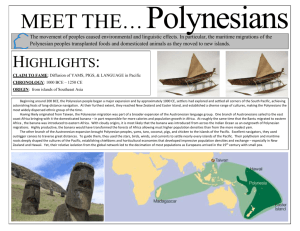
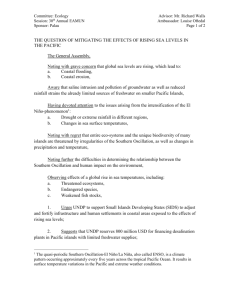
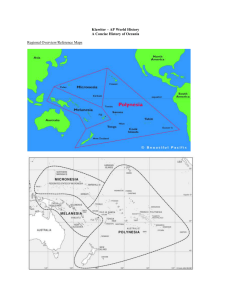
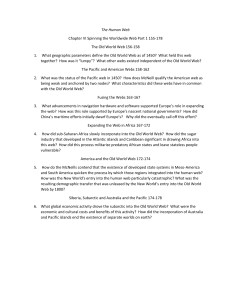


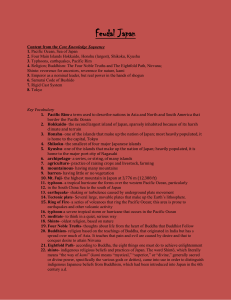
![Terms of Reference [MS Word] - Social Development in Asia](http://s3.studylib.net/store/data/007378690_1-757307feddae203d9ec9b887dcb3b068-300x300.png)
